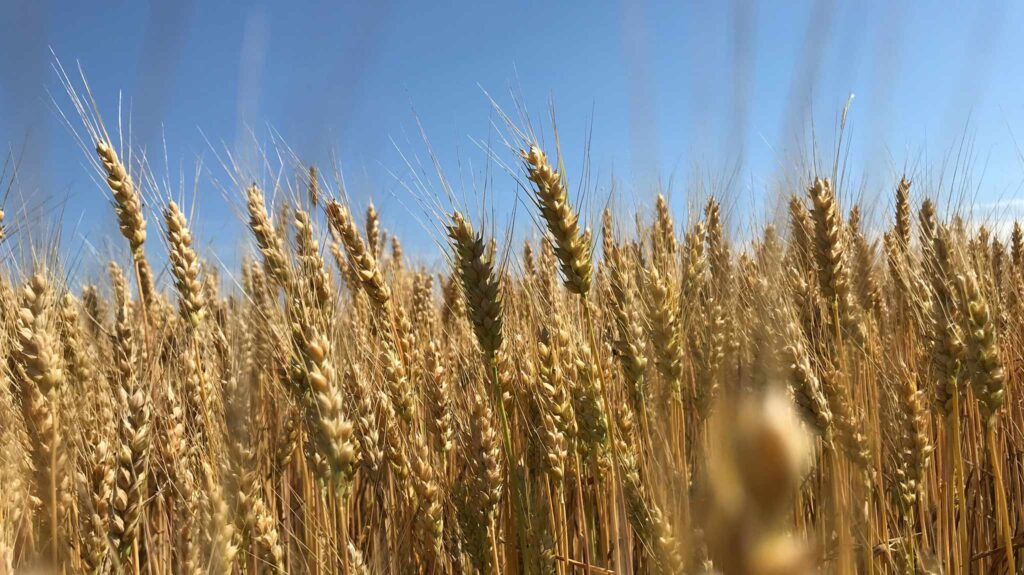Commentary provided by Chad Burlet of Third Street AG Investments
With the arrival of winter in the northern hemisphere, a majority of market observers have turned their attention toward the production prospects in the southern hemisphere, where Brazil, Argentina, and Australia dominate.
Australia’s leading crop is wheat, and they are on track to produce their third large crop in a row. While the size of the crop, probably 34-35 million metric tons (MMT), is no longer a concern, the quality of the wheat is. Parts of eastern Australia had record rainfall and flooding in October and early November. As a result, many fields were underwater for an extended period. The harvest is one-third complete and so far, the percentage of wheat grading as feed quality, as opposed to milling quality, is lower than expected.
In South America, Argentina is the top wheat producer, and its crop has not fared nearly as well as Australia’s. First, it has been dry in Argentina, and now it’s turning hot. Wheat is a dry weather crop, but estimates have fallen from 18 MMT to 11 MMT, half of last year’s record crop.
While the wheat crop is important to Argentina, their corn and soybean crops are far larger, generating a significant portion of farm income. The USDA’s current crop estimate is 55 MMT of corn and 49.5 MMT of soybeans. Unfortunately, conditions have been so dry that planting of both crops has been delayed. As a result, private estimates have already dropped to 5-10% below the USDA. There is still time for conditions, and the crops, to improve, but the early December forecast is not favorable.
Brazil has been enjoying much better weather than its southern neighbor. A few dry pockets can be found, but most growing areas have received average rainfall or above. The USDA has estimated Brazilian production at 126 MMT of corn and 152 MMT of soybeans. Planting progress varies by region, but nationally both crops are close to an average pace. A few crop scouts in Brazil have started to move their soybean estimates up to 155-156 MMT, so they have the potential to offset some of the Argentine losses.
Meanwhile, the world welcomed the news in the Black Sea that the Ukrainian Grain Corridor Agreement had been extended for another 120 days. Ukraine had hoped to extend the agreement by as much as a year and to increase the number of loading ports from three to five, but Russia would not agree.
Because of the Australian and Black Sea news, wheat has been our downside price leader this month, with Chicago losing 12-13%. In addition, feed wheat out of Australia is now a small discount to corn delivered into Southeast Asia. That, in turn, has pressed corn futures slightly lower this month. The other news that has pressured the value of U. S. corn is the start of the Brazilian shipments of corn to China. After six months of administrative work, the first vessels shipped last week.
Soybeans, on the other hand, moved higher this month. That market has been supported by Argentine weather concerns and optimism about Renewable Volume Obligations (RVOs). This afternoon the EPA is due to announce their recommended RVOs for 2022 and 2023. Those targets are expected to support soybean oil produced from U.S.-grown soybeans.
The other positive news for renewable fuels is that Big Oil and Big Ag have found common ground on an E15 ethanol blend. Individual states were moving to a year-round E15 blend, and the refiners and retailers faced a complicated patchwork of different blends. In the interest of clarity and uniformity, the American Petroleum Institute is now supporting national legislation for year-round E15. That bill has now been introduced in the Senate.
Considerable attention is also being paid to the daily updates on the covid situation in China. At times it seems as if China’s policies and updates are cited as the cause of every price rally and break. While China is extremely important, the changes there are not as significant as some would have us believe, certainly not on a minute-to-minute or hour-to-hour basis. We believe the weather in South America is the most important variable for the next three months, absent a Black Sea calamity.
Photo by Liz Joseph on Unsplash

